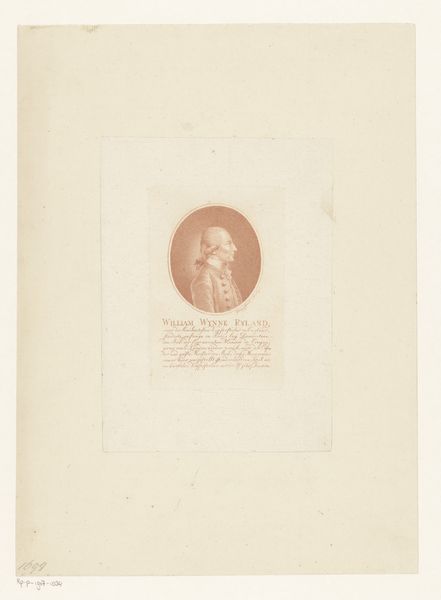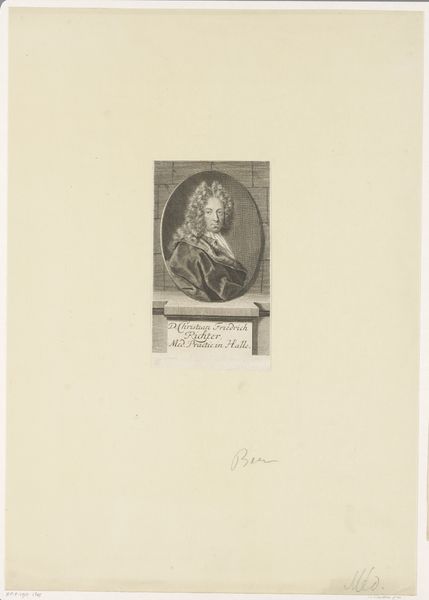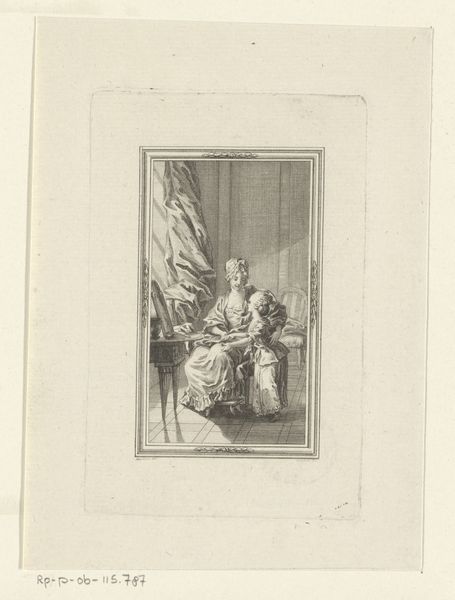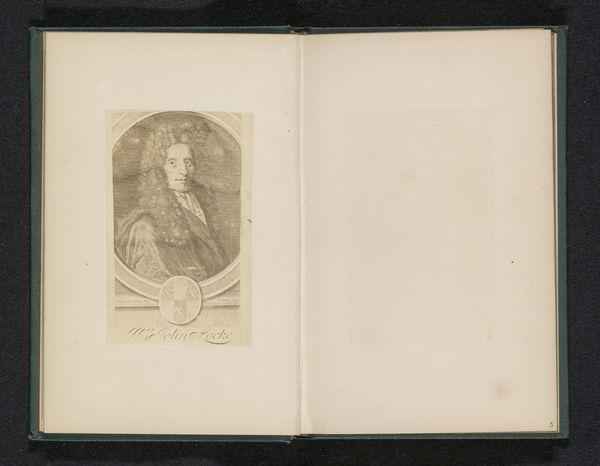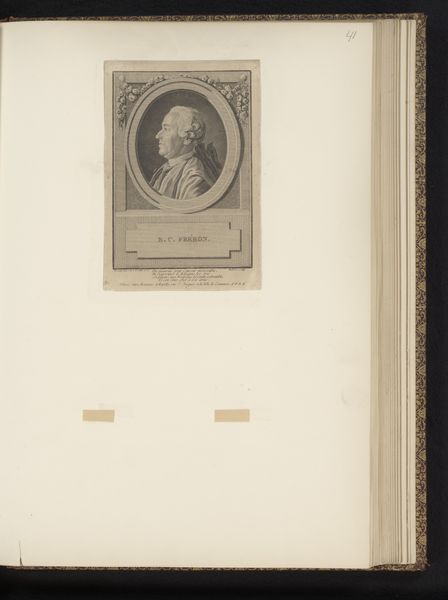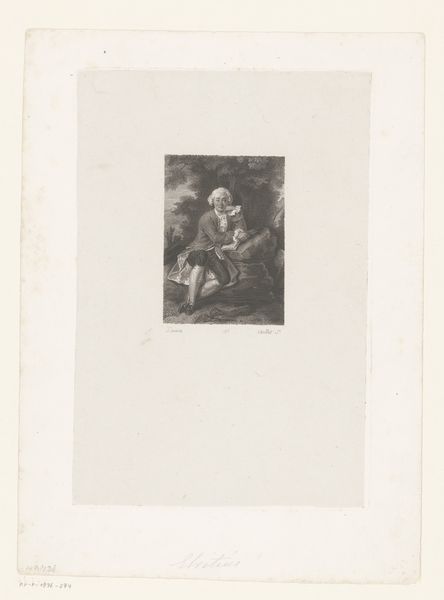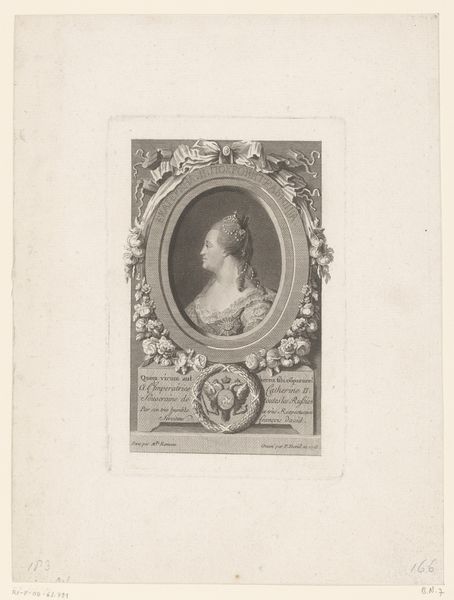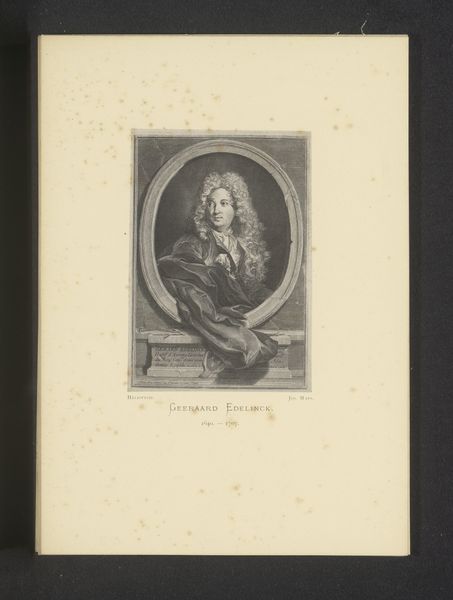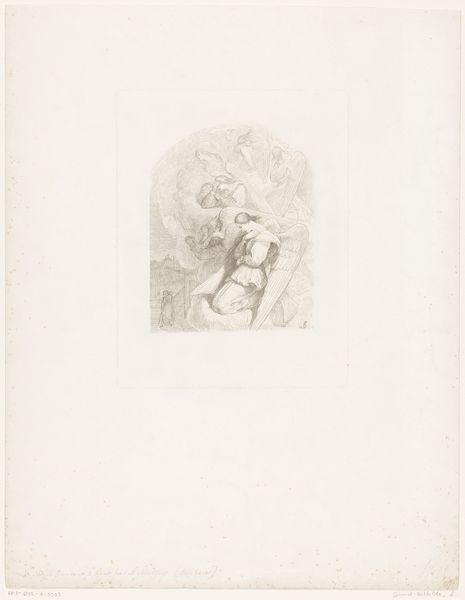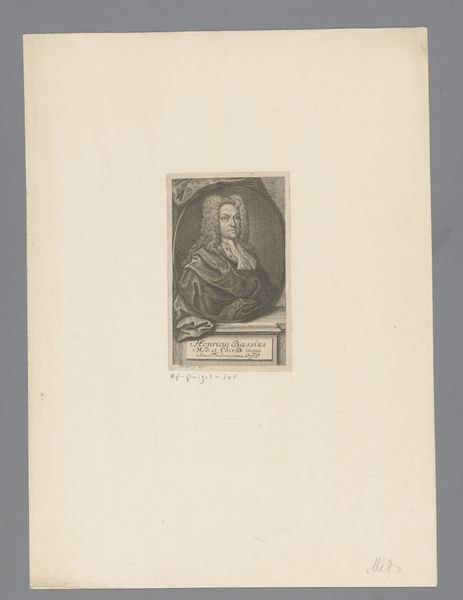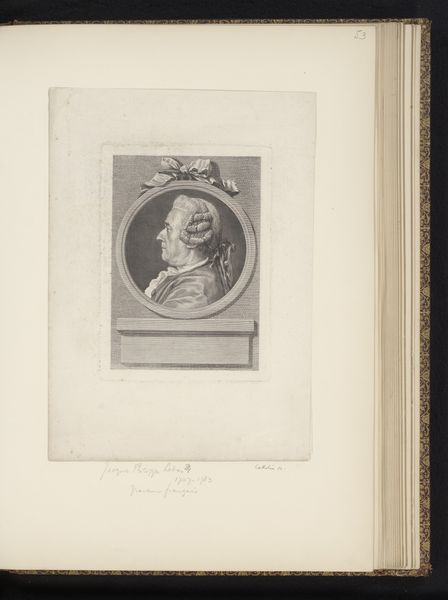
Dimensions: height 129 mm, width 92 mm
Copyright: Rijks Museum: Open Domain
Jean-Baptiste de Grateloup created this portrait of Jacques Bénigne Bossuet, sometime in the late 18th or early 19th century, using engraving techniques. Notice how the oval frame, adorned with delicate foliage, immediately draws your eye to the figure of Bossuet. The engraver's strategic use of light and shadow models Bossuet's face. Look closely at the textures: the soft folds of his robes contrast with the solid architectural backdrop, creating depth. Grateloup was a master of the "physionotype," a printmaking technique that emphasizes the sitter's unique features. This approach aligns with Enlightenment ideals, which focus on individuality and empirical observation. The portrait, however, is not just an exercise in realism. The controlled lines and balanced composition echo classical artistic conventions, reflecting the period's interest in order and reason. Consider how the act of engraving itself—a process of controlled mark-making—mirrors the Enlightenment's emphasis on precision and analysis. The image’s structure invites us to see beyond the subject and engage with the print's visual language and its cultural implications.
Comments
No comments
Be the first to comment and join the conversation on the ultimate creative platform.


